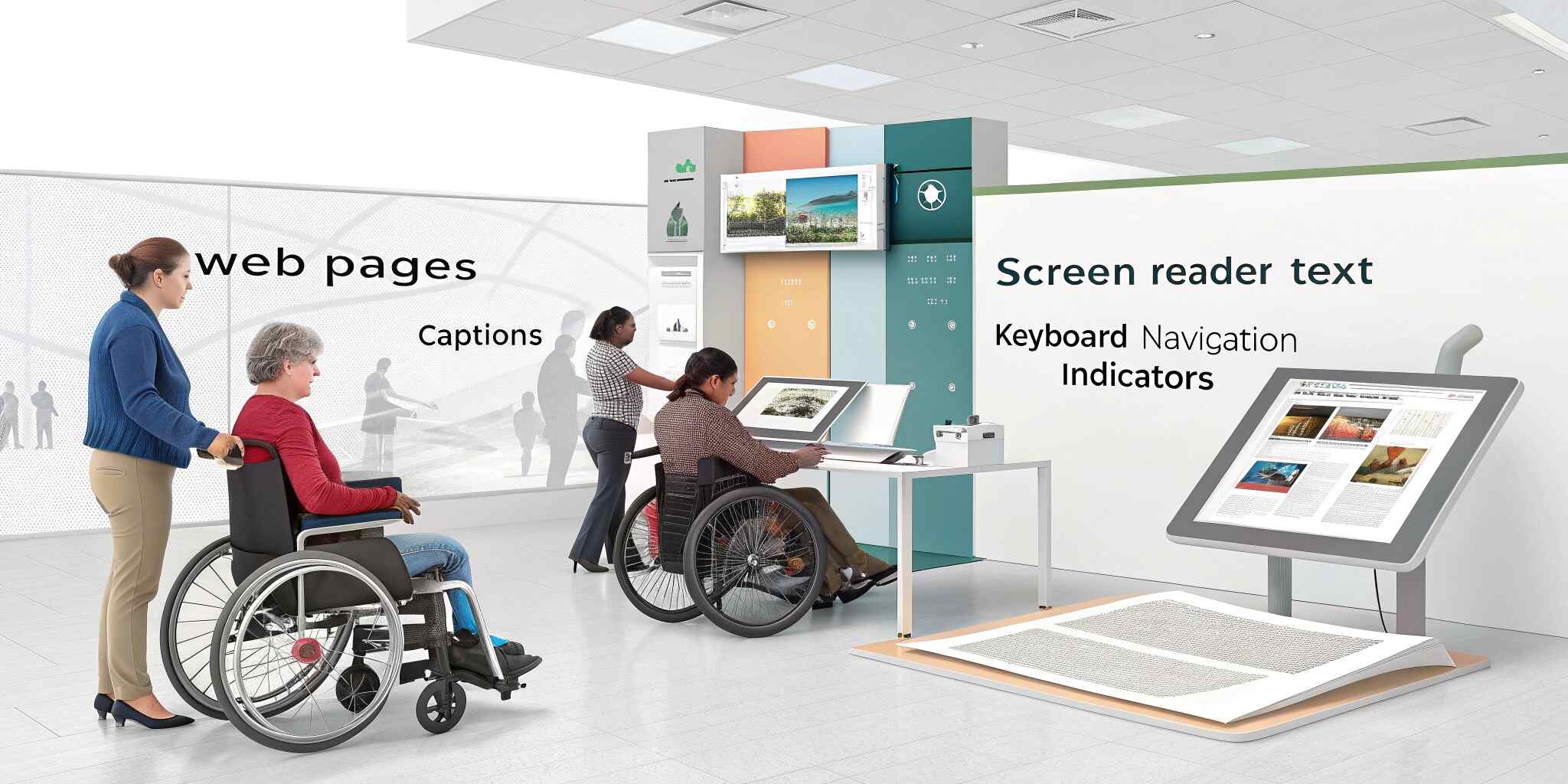Accessibility on the web isn’t a luxury—it’s a necessity. With over 1 billion people globally living with some form of disability, ensuring your website is accessible means enabling everyone to access, navigate, and interact with your content, regardless of ability.
Why Accessibility Matters
- Inclusivity: A website that’s usable by everyone reflects a brand’s commitment to inclusivity.
- Legal Compliance: Many countries now mandate digital accessibility by law (e.g., ADA, WCAG, EN 301 549).
- Improved UX: Accessibility features like clear navigation and alternative text enhance user experience for all.
- SEO Benefits: Accessible sites are typically more SEO-friendly due to better semantic structure and metadata.
Key Principles of Accessible Design (WCAG Guidelines)
Perceivable: Content must be presentable in ways users can perceive.
- Use alt text for images.
- Provide captions for videos.
Operable: Users must be able to navigate and use the interface.
- Ensure keyboard navigation.
- Avoid flashing content that can trigger seizures.
Understandable: Information and operations must be easy to comprehend.
- Use plain language.
- Provide clear instructions and error messages.
Robust: Content should be compatible with various assistive technologies.
- Use semantic HTML.
- Validate code for screen readers and browsers.
Best Practices for Inclusive Web Design
- Use high-contrast colors for text and backgrounds.
- Label form fields clearly with associated inputs.
- Create logical heading hierarchies for screen readers.
- Ensure responsive design for all devices and orientations.
- Avoid auto-playing media or give users controls.
Tools to Test and Improve Accessibility
- WAVE (Web Accessibility Evaluation Tool)
- axe DevTools
- Lighthouse in Chrome DevTools
- NVDA/JAWS screen readers
- Color Contrast Analyzers
The Business Case for Accessibility
- Reach a broader audience
- Enhance brand reputation
- Reduce legal risk
- Improve retention and customer satisfaction
Conclusion
Designing for accessibility is not just about compliance—it’s about compassion, creativity, and commitment. By building inclusive digital experiences, you not only make the web a better place but also align your brand with modern values and expanded reach. Accessibility matters—because everyone matters.


